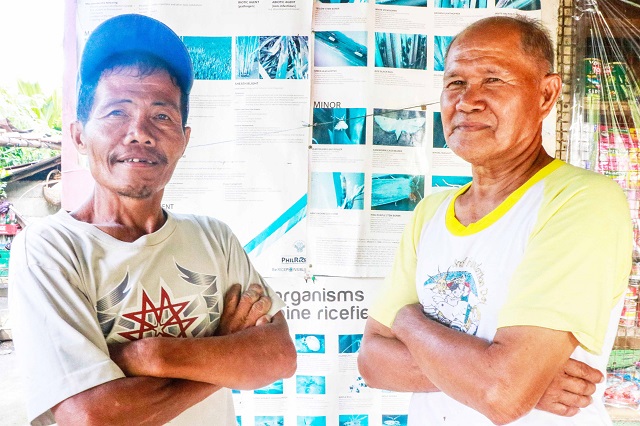
Integrated pest management (IPM) requires united efforts to create ripples of impact on farmers within a community. This is the reality for Johnny C. Escote, 53, and Antonio E. Estribor, 72, both from Midsayap, North Cotabato.
Their rice areas being adjacent often bring them together checking on their fields’ helpful and harmful insects, which they learned from the Institute.
“Since attending farmer field schools conducted by PhilRice and partner agencies, we have encouraged other farmers to follow IPM practices. We were not disappointed since then,” Escote said.
Fellow farmers look at Manong Johnny and Tony as their PalayCheck guides — adopting their planting schedule, dates of applying fertilizers, and the need to judiciously use pesticides. Besides choosing high-quality seeds, the tandem enjoins farmers in their community to rest their fields (fallow period), and follow synchronous planting. They attested that crops in their 19-ha rice area were established within 15 days.
“We warned our fellow farmers who among them would have the largest pest population owing to early or late planting. Our forecasts were correct; so they were convinced to join,” they said.




